Exploring the Continuity of Settlement Tradition Through Australasia and Oceania over 65,000 Years
Abstract
1. Introduction
2. Methods
3. Results
3.1. Contextualising the Architectural Traditions of Australasia and Oceania
3.2. Economic Diversification and Hybrid Economies
Diversification of behavioural characteristics between different environments, as human groups reshaped economic and social practices in response to regional/local resources, was a common pattern, and may have initially been facilitated by the relative isolation of colonizing groups. This diversification may underpin the differing culture-historical trajectories that are evident at later times across the Sunda, Sahul and Near Oceanic regions.[8] (p. 42)
Subsistence system diversification is a process by which a population expands into a new environment that contains unexploited ecological opportunities (roughly synonymous with niche), and in which at least part of the population develops a new subsistence system to exploit the opportunity and increase fitness.[19] (p. 43)
Such cultures in which shelter is minimal are essentially those of nomadic forest peoples who live by foraging, such as the Semang groups of the Malay Peninsula and the Punan of Borneo. Those who lead a foraging life-style must maintain an ideological commitment to non-materialism; they could have no use for elaborate houses since they are often on the move. Nor are houses necessary as a means of displaying rank or wealth, since these societies almost invariably are among the most egalitarian known to us.[27] (p. 91)
3.3. The Austronesian Migrations
There is now a near-universal agreement among both linguists and archaeologists that the Austronesian expansion began from Taiwan, somewhat more than a millennium after it was settled by Neolithic rice and millet farmers from Southeast China.[29] (p. 417)
The linguistic findings match the archaeological record with regard to dispersal speed. The archaeology… indicates that Neolithic cultural complexes dispersed at some speed, between c.2000 and 1350 BC, from the northern Philippines southwards into the Indo-Malaysian archipelago, and eastwards beyond New Guinea into the Bismarck Archipelago.[3] (p. 346)
3.4. The Classical Austronesian House Elements
3.5. The Austronesian Houses of the Malay Peninsula
3.6. Austronesian Exemplars from Eastern Indonesia and the Philippines
Wherever we look in the archipelago, we find societies in which the word ‘house’ designates not only a physical structure, but the group kin who are living in it or who claim membership in it.[27] (p. 142)
3.7. Emergence of the Longhouse Tradition
3.8. New Guinea Longhouses
3.9. The Austronesian Progression into the Pacific
In the eastern, Polynesian parts of the Austronesian world there are so many conspicuous contrasts with the house types of the Indonesian archipelago that it is difficult to find convincing indications for more than a very general common architectural tradition. This refers not only to matters of design but also to basic disparities in construction details—intricate mortise and tenon techniques in the west, binding in the east, for instance.[37] (p. 19)
3.10. Examples of Economic and Political Adaptation and Diversification
They represented in a heightened form a contrast found throughout Southeast Asia between the hierarchical polities of the lowlands that were based on irrigated rice, kingship, and a world religion, and the egalitarian societies of the highlands that were based on shifting cultivation, kinship and an indigenous religion.[51] (p. 236)
3.11. The Cultures of Oceania
The elaborately lashed and painted rafters, purlins and tie structures that supported these thatched roofs were associated with ancestors and deities, probably following the same principles employed in megalithic structures, namely that height was associated with social and spiritual leadership. Closer to the floor, columns were often associated with recent or present-day leaders and indicated their internal seating positions.[52] (p. 416)
The house, as a physical entity and as a cultural category, has the capacity to provide social continuity. The memory of a succession of houses, or of a succession within one house, can be an index of important events in the past. Equally important is the role of the house as a repository of ancestral objects that provide physical evidence of a specific continuity with the past. It is these objects stored within the house that are a particular focus in asserting continuity with the past.[6] (p. 14)
3.12. The Sea Gypsies and Maritime Peoples
3.13. The Coming of the Third Wave of Colonisers
4. Discussion
5. Conclusions and Significances
There is in the indigenous religions of the Archipelago a widely shared concept of a vital force which suffuses and animates the universe. This force has been variously labelled in the literature as ‘spirit’, ‘soul-stuff’, ‘essence’, ‘vital force’, ‘cosmic energy’, and so on, while in Malay and Indonesian languages it is widely known by the word semangat or its cognates. It is this view of the universe which has been called ‘animism’ by Western writers, some of whom have drawn comparisons between semangat and the Polynesian concept of mana.[27] (p. 115)
Funding
Data Availability Statement
Conflicts of Interest
References
- Memmott, P.; Kane, J. Australasia and Oceania. In Encyclopaedia of Vernacular Architecture of the World, 2nd ed.; Vellinga, M., Ed.; Bloomsbury: London, UK, in press.
- Memmott, P.; Ting, J.; O’Rourke, T.; Vellinga, M. (Eds.) Design and the Vernacular: Interpretations for Contemporary Architectural Practice and Theory; Bloombury: London, UK, 2024. [Google Scholar]
- Bellwood, P.; Chambers, G.; Ross, M.; Hung, H. Are ‘Cultures’ Inherited? Multidisciplinary Perspectives on the Origins and Migrations of Austronesian-Speaking Peoples Prior to 1000 BC. In Investigating Archaeological Cultures: Material Culture, Variability, and Transmission; Roberts, B.W., Linden, M.V., Eds.; Springer: New York, NY, USA, 2011; pp. 321–354. [Google Scholar]
- Collier, J. Visual Anthropology: Photography as a Research Method; Holt, Rinehart and Winston: New York, NY, USA, 1967. [Google Scholar]
- Chio, J. Visual anthropology. In The Open Encyclopedia of Anthropology; Stein, F., Ed.; (2021) 2023. Available online: https://www.anthroencyclopedia.com/entry/visual-anthropology (accessed on 10 September 2025).
- Fox, J.J. (Ed.) Inside Austronesian Houses: Perspectives on Domestic Designs for Living; Australian National University Press: Canberra, Australia, 1993. [Google Scholar]
- Kealy, S.; Lous, J.; O’Connor, S. Reconstructing Palaeography and Inter-island Visibility in the Wallacean Archipelago During the Likely Period of Sahul Colonization, 65–45,000 Years Ago. Archaeol. Prospect. 2017, 24, 259–272. [Google Scholar] [CrossRef]
- O’Connor, S.; Hiscock, P. The Peopling of Sahul and Near Oceania. In The Oxford Handbook of Prehistoric Oceania; Hunt, T.L., Cochrane, E.E., Eds.; Oxford University Press: Oxford, UK, 2018; pp. 26–47. [Google Scholar]
- Birdsell, J.B. The Recalibration of a Paradigm for the First Peopling of Greater Australia. In Sunda and Sahul: Prehistoric Studies in Southeast Asia, Melanesia, and Australia; Allen, J., Golson, J., Jones, R., Eds.; Academic Press: London, UK, 1977; pp. 113–167. [Google Scholar]
- Crabtree, S.A.; White, D.A.; Bradshaw, C.J.A.; Saltré, F.; Williams, A.N.; Beaman, R.J.; Bird, M.I.; Ulm, S. Landscape rules predict optimal super-highways for the first peopling of Sahul. Nat. Hum. Behav. 2021, 5, 1303–1313. [Google Scholar] [CrossRef] [PubMed]
- Crabtree, S.A.; Williams, A.; Bradshaw, C.; White, D.; Saltré, F.; Ulm, S. We mapped the ‘super-highways’ the First Australians used to cross the ancient land. The Conversation, 30 April 2021. Available online: https://theconversation.com/we-mapped-the-super-highways-the-first-australians-used-to-cross-the-ancient-land-154263 (accessed on 15 March 2023).
- McCarthy, F.D. “Trade” in Aboriginal Australia, and “Trade” relationships with Torres Strait, New Guinea and Malaya. Oceania 1939, 10, 171–195. [Google Scholar] [CrossRef]
- Bradshaw, C.J.A.; Crabtree, S.A.; White, D.A.; Ulm, S.; Bird, M.I.; Williams, A.N.; Saltré, F. Directionally supervised cellular automaton for the initial peopling of Sahul. Quat. Sci. Rev. 2023, 303, 107971. [Google Scholar] [CrossRef]
- Williams, A.N.; Ulm, S.; Cook, A.R.; Langley, M.C.; Collard, M. Human refugia in Australia during the Last glacial maximum and Terminal Pleistocene: A geospatial analysis of the 25–12 ka Australian archaeological record. J. Archaeol. Sci. 2013, 40, 4612–4625. [Google Scholar] [CrossRef]
- Frachetti, M.; Smith, C.; Traub, C.M.; Williams, T. Nomadic ecology shaped the highland geography of Asia’s Silk Roads. Nature 2017, 543, 193–198. [Google Scholar] [CrossRef] [PubMed]
- Bradshaw, C.J.A.; Norman, K.; Ulm, S.; Williams, A.N.; Clarkson, C.; Chadœuf, J.; Lin, S.C.; Jacobs, Z.; Roberts, R.G.; Bird, M.I.; et al. Stochastic models support rapid peopling of Late Pleistocene Sahul. Nat. Commun. 2021, 12, 2440. [Google Scholar] [CrossRef] [PubMed]
- Terrell, J.E. Think Globally, Act Locally [Review of the book Eden in the East: The Drowned Continent of Southeast Asia, by S. Oppenheimer]. Curr. Anthropol. 1999, 40, 556. [Google Scholar]
- Walter, R.; Buckly, H.; Jacomb, C.; Matisoo-Smith, E. Mass Migration and the Polynesian Settlement of New Zealand. J. World Prehist. 2017, 30, 351–376. [Google Scholar] [CrossRef]
- Latinis, D.K. The Development of subsistence system models for Island Southeast Asia and Near Oceania: The nature and role of arboriculture and arboreal-based economies. World Archaeol. 2000, 32, 41–67. [Google Scholar] [CrossRef]
- Pascoe, B. Dark Emu Seeds: Agriculture or Accident? Magabala Books: Broome, Australia, 2014. [Google Scholar]
- Sutton, P.; Walshe, K. Farmers or Hunter-Gatherers? The Dark Emu Debate; Melbourne University Press: Melbourne, Australia, 2021. [Google Scholar]
- Memmott, P. Gunyah, Goondie and Wurley, 2nd ed.; Thames and Hudson: Port Melbourne, Australia, 2022. [Google Scholar]
- Loupis, G. Architecture of the Central Highlands of Papau New Guinea, Traditional Technology Series No. 3; LikLik Buk Information Centre: Lae, Papua New Guinea, 1984. [Google Scholar]
- David, B.; Delannoy, J.-J. The remarkable Nawarla Gabarnmang. In Gunyah, Goondie and Wurley, 2nd ed.; Memmott, P., Ed.; Thames and Hudson: Port Melbourne, Australia, 2022; pp. 336–339. [Google Scholar]
- Porath, N. Semang: Hunter-gatherer lean-to. In Encyclopaedia of Vernacular Architecture of the World, 2nd ed.; Vellinga, M., Ed.; Bloomsbury: London, UK, in press.
- O’Rourke, T. Adaptive uses of traditional windbreaks and bough sheds for Indigenous housing in Australia. In Design and the Vernacular: Interpretations for Contemporary Architectural Practice and Theory; Memmott, P., Ting, J., O’Rourke, T., Vellinga, M., Eds.; Bloombury: London, UK, 2024; pp. 105–116. [Google Scholar]
- Waterson, R. The Living House: An Anthropology of Architecture in South-East Asia, 1st ed.; Oxford University Press: Singapore, 1990. [Google Scholar]
- Encarnacion-Tan, R.; Zialcita, F.N. Philippines. In Encyclopaedia of Vernacular Architecture of the World, 2nd ed.; Vellinga, M., Ed.; Bloomsbury: London, UK, in press.
- Blust, R. The Austronesian Homeland and Dispersal. Annu. Rev. of Linguist. 2019, 5, 417–434. [Google Scholar] [CrossRef]
- George, M.; Wyeth, H.M. We the Voyagers. Part One: Our Vaka (Lata’s Children); Part Two: Our Moana; George, M., H.M. Wyeth, Dirs.; Vaka Taumako Project, Prod., 2020 [film].
- Schefold, R. The Southeast Asian-type house: Common features and local transformations of an ancient architectural tradition. In Indonesian Houses: Tradition and Transformation in Vernacular Architecture; Schefold, R., Domenig, G., Nas, P., Eds.; Singapore University Press: Singapore, 2004; pp. 19–60. [Google Scholar]
- Yuan, L.J. The Malay House: Rediscovering Malaysia’s Indigenous Shelter System; Institut Masyarakat: Kuala Lampur, Malaysia, 1987. [Google Scholar]
- Memmott, P. Gunyah, Goondie + Wurley: The Aboriginal Architecture of Australia, 1st ed.; University of Queensland Press: St Lucia, Australia, 2007. [Google Scholar]
- Stewart, G.; Ting, J. Malay Peninsula. In Encyclopaedia of Vernacular Architecture of the World, 2nd ed.; Vellinga, M., Ed.; Bloomsbury: London, UK, in press.
- Tang, S.T. The Million-Ringgit Rumah Bugis @ Pontian, Johor. ImEmily 4 October 2014. Available online: https://www.imemily.com/2014/10/the-million-ringgit-rumah-bugis-pontian.html (accessed on 29 October 2025).
- Schefold, R. Sa’dan Toraja: Saddle Roof. In Encyclopaedia of Vernacular Architecture of the World, 2nd ed.; Vellinga, M., Ed.; Bloomsbury: London, UK, in press.
- Schefold, R. Sa’dan Toraja. In Encyclopaedia of Vernacular Architecture of the World, 2nd ed.; Vellinga, M., Ed.; Bloomsbury: London, UK, in press.
- Mross, J.; Doubrawa, I. Wanokakan. In Encyclopaedia of Vernacular Architecture of the World, 2nd ed.; Vellinga, M., Ed.; Bloomsbury: London, UK, in press.
- Waterson, R.; De Jong, N. Tanimbarese. In Encyclopaedia of Vernacular Architecture of the World, 2nd ed.; Vellinga, M., Ed.; Bloomsbury: London, UK, in press.
- Kaharudin, H.A.F.; Wicaksono, G.; Azis, F.; Kealy, S.; Sari, D.M.; Ririmasse, M.N.R.; O’Connor, S. Living Seaward: Maritime Cosmology and the Contemporary Significance of Natar Fampompar, a Stone Boat Ceremonial Structure in the Village of Sangliat Dol, Tanimbar Islands. Ethnoarchaeology 2024, 16, 255–280. [Google Scholar] [CrossRef]
- Waterson, R.; Doubrawa, I. Manggarai. In Encyclopaedia of Vernacular Architecture of the World, 2nd ed.; Vellinga, M., Ed.; Bloomsbury: London, UK, in press.
- Peralta, J. Maranao. In Encyclopaedia of Vernacular Architecture of the World, 2nd ed.; Vellinga, M., Ed.; Bloomsbury: London, UK, in press.
- Guerriero, A. Borneo. In Encyclopaedia of Vernacular Architecture of the World, 2nd ed.; Vellinga, M., Ed.; Bloomsbury: London, UK, in press.
- Blust, R. Longhouses and nomadism: Is there a connection? Borneo Res. Bull. 2016, 46, 194–220. [Google Scholar]
- Oliver, P.; Memmott, P.; Guerreiro, A.; Kane, J. Penan/Punan. In Encyclopaedia of Vernacular Architecture of the World, 2nd ed.; Vellinga, M., Ed.; Bloomsbury: London, UK, in press.
- Fowler, M.; Craig, B. Papuan Gulf: Longhouses. In Encyclopaedia of Vernacular Architecture of the World, 2nd ed.; Vellinga, M., Ed.; Bloomsbury: London, UK, in press.
- Boylan, C. Asmat: Jeu. In Encyclopaedia of Vernacular Architecture of the World, 2nd ed.; Vellinga, M., Ed.; Bloomsbury: London, UK, in press.
- Coiffier, C. Iatmul. In Encyclopaedia of Vernacular Architecture of the World, 2nd ed.; Vellinga, M., Ed.; Bloomsbury: London, UK, in press.
- Coiffier, C. Sawos. In Encyclopaedia of Vernacular Architecture of the World, 2nd ed.; Vellinga, M., Ed.; Bloomsbury: London, UK, in press.
- Waterson, R.; Achmadi, A. Indonesia, West. In Encyclopaedia of Vernacular Architecture of the World, 2nd ed.; Vellinga, M., Ed.; Bloomsbury: London, UK, in press.
- Gibson, T. From Tribal Hut to Royal Palace: The Dialectic of Equality and Hierarchy in Austronesian Southeast Asia. Anthropol. Forum 2019, 29, 234–248. [Google Scholar] [CrossRef]
- Miksic, J.N.; Memmott, P.; Brown, D. Southeast Asia, Australia and Oceania, 1400–1780. In Sir Banister Fletcher’s Global History of Architecture; Fraser, M., Ed.; Bloomsbury: London, UK, 2019; Volume 2, pp. 406–422. [Google Scholar]
- Austin, M.; Brown, D. Maori. In Encyclopaedia of Vernacular Architecture of the World, 2nd ed.; Vellinga, M., Ed.; Bloomsbury: London, UK, in press.
- Brown, D. Maori: Architecture Revitalisation. In Encyclopaedia of Vernacular Architecture of the World, 2nd ed.; Vellinga, M., Ed.; Bloomsbury: London, UK, in press.
- Lagarde, L.; Gony, Y. From cultural symbol to societal sign: The question of the Kanak traditional house in present-day New Caledonia. In Design and the Vernacular: Interpretations for Contemporary Architectural Practice and Theory; Memmott, P., Ting, J., O’Rourke, T., Vellinga, M., Eds.; Bloombury: London, UK, 2024; pp. 281–294. [Google Scholar]
- Boulay, R. La Maison Kanak; Parentheses: Marseille, France, 1990. [Google Scholar]
- Brown, D. Sharing Mātauranga Māori. Architecture New Zealand May/June 2023; pp. 58–63. Available online: https://architecturenow.co.nz/articles/sharing-matauranga-maori/ (accessed on 29 October 2025).
- Bier, M.; Hailey, C. Badjao. In Encyclopaedia of Vernacular Architecture of the World, 2nd ed.; Vellinga, M., Ed.; Bloomsbury: London, UK, in press.
- Haji Adenan, R.; Rodrigus, L.; Borsi, K.; Kiamba, L. Kampong Ayer: A Community Living on Water in Brunei Darussalam. In Proceedings of the 30th International PLEA Conference, CEPT University, Ahmedabad, India, 16–18 December 2014. [Google Scholar]
- Leblanc, R. Water Villages (Brunei). In Encyclopaedia of Vernacular Architecture of the World, 2nd ed.; Vellinga, M., Ed.; Bloomsbury: London, UK, in press.
- Felgath, M.W. Reading Lapita near Oceania: Intertidal and Shallow-Water Pottery Scatters, Roviana Lagoon, New Georgia, Solomon Islands. Ph.D. Thesis, University of Auckland, Auckland, New Zealand, 2003. [Google Scholar]
- Barcham, M.; Scheyvens, R.; Overton, J. New Polynesian Triangle: Rethinking Polynesian migration and development in the Pacific. Asia Pac. Viewp. 2009, 50, 322–337. [Google Scholar] [CrossRef]
- Faleolo, R. Pasifika Well-Being and Trans-Tasman Migration: A Mixed Methods Analysis of Samoan and Tongan Well-Being Perspectives and Experience in Auckland and Brisbane. Ph.D. Thesis, University of Queensland, Brisbane, Australia, 2020. [Google Scholar]
- Miller, J. The Evolution of the Marshallese Vernacular House. Fabrications 2020, 30, 110–136. [Google Scholar] [CrossRef]
- Durand, M. Concrete Time: Material Temporalities and Contemporary Mobilities in the Vernacular Architecture of Northern Vanuatu, Melanesia. Fabrications 2020, 30, 92–109. [Google Scholar] [CrossRef]
- Akpedonu, E. Visayan: Urban House (Bahay na Bato). In Encyclopaedia of Vernacular Architecture of the World, 2nd ed.; Vellinga, M., Ed.; Bloomsbury: London, UK, in press.
- Brown, S.; Ruckes, A.; Mendes-Underwood, F.; Fanamanu, A.; Brown, D.; Ingham, J. Te Whakapapa o ngā Wharenui: A genealogy of Māori meeting houses. In Design and the Vernacular: Interpretations for Contemporary Architectural Practice and Theory; Memmott, P., Ting, J., O’Rourke, T., Vellinga, M., Eds.; Bloombury: London, UK, 2024; pp. 34–48. [Google Scholar]
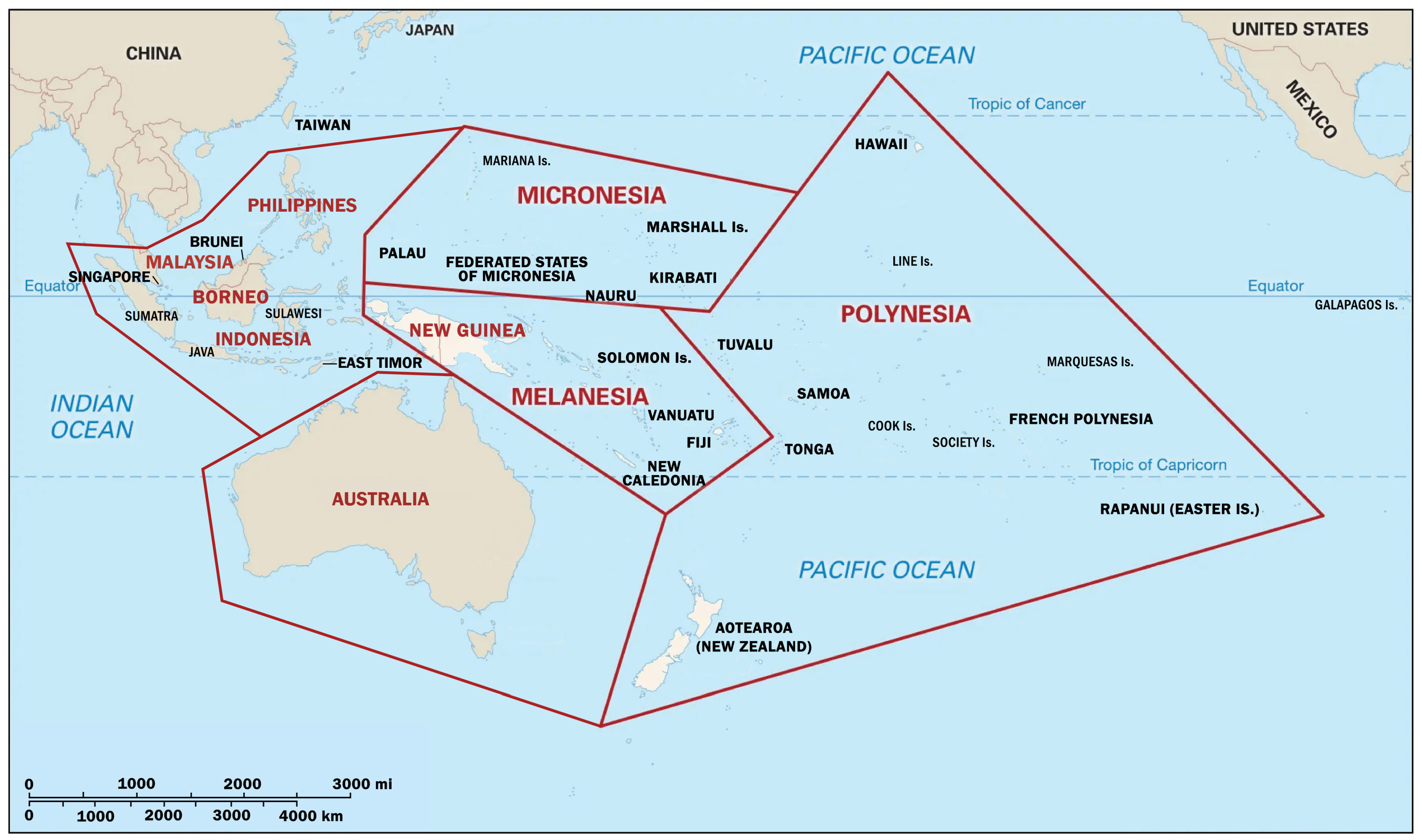
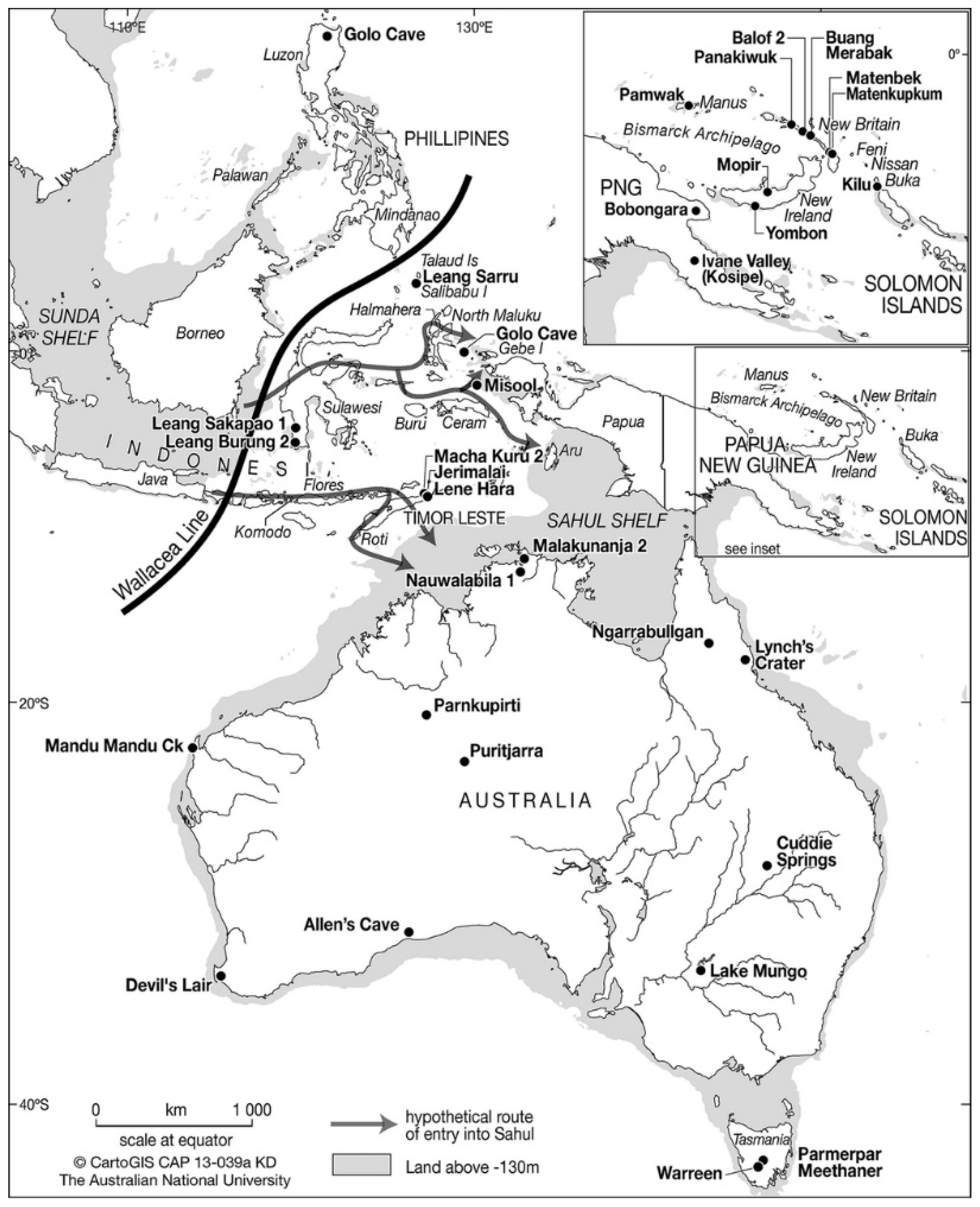
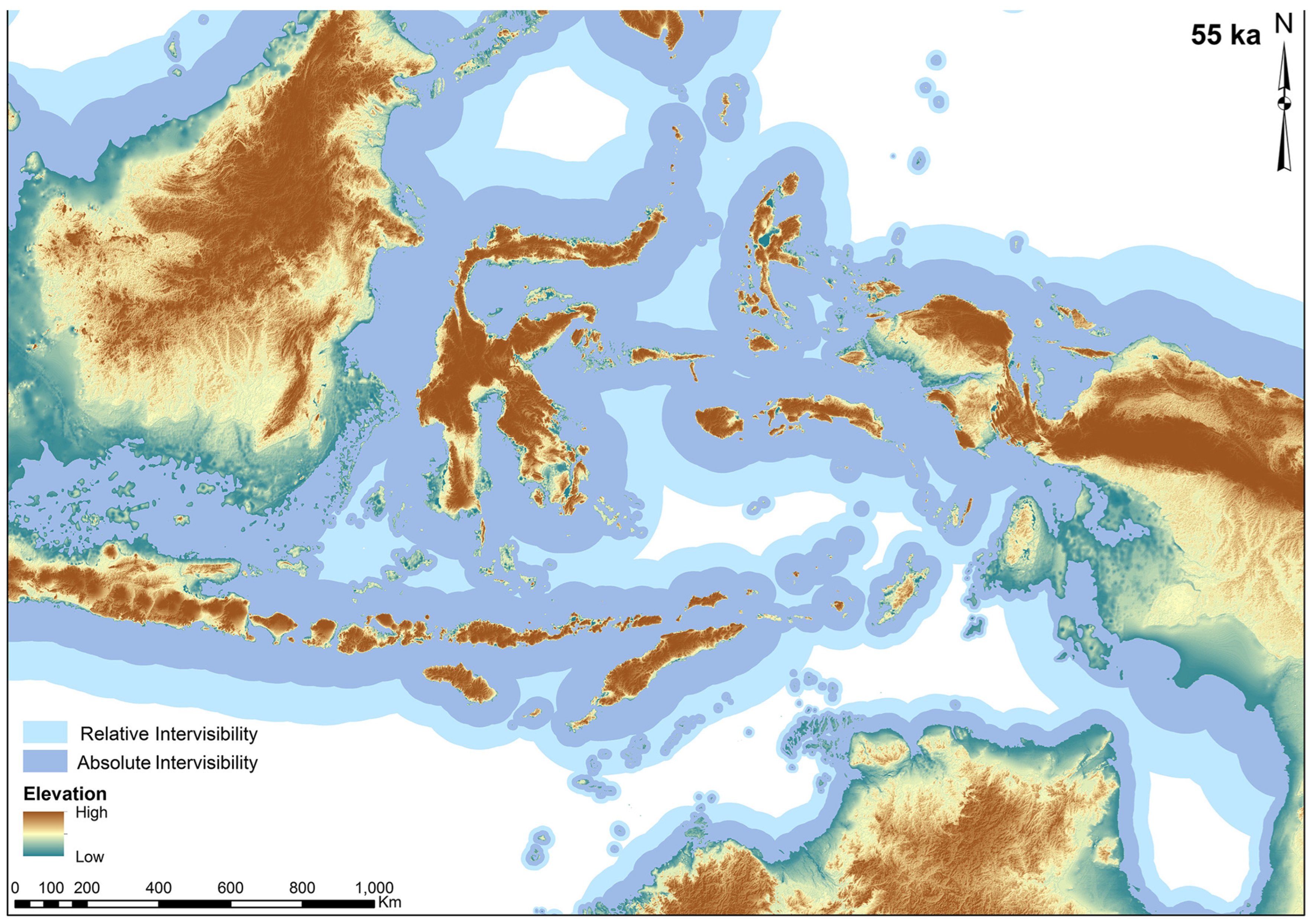
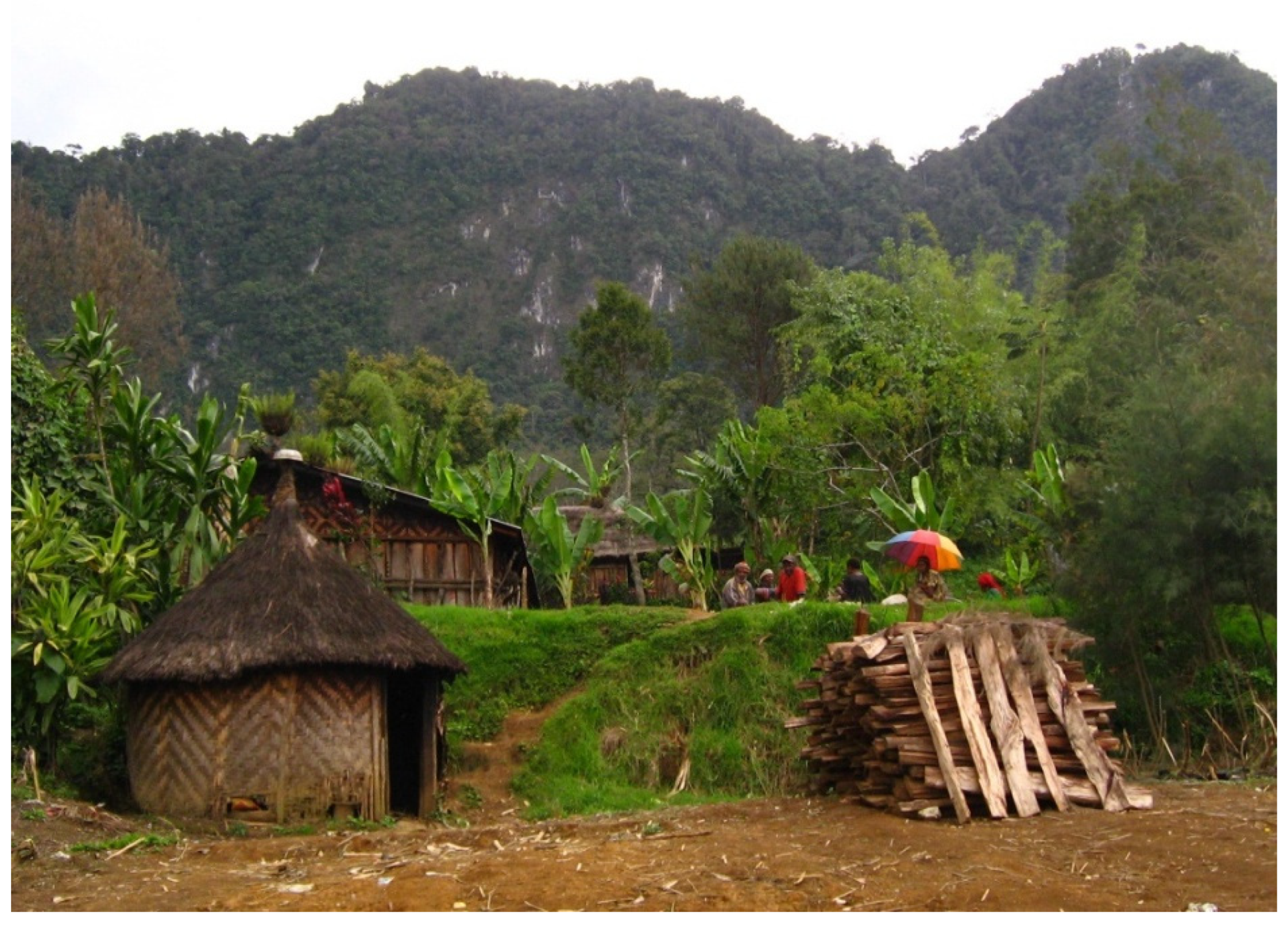
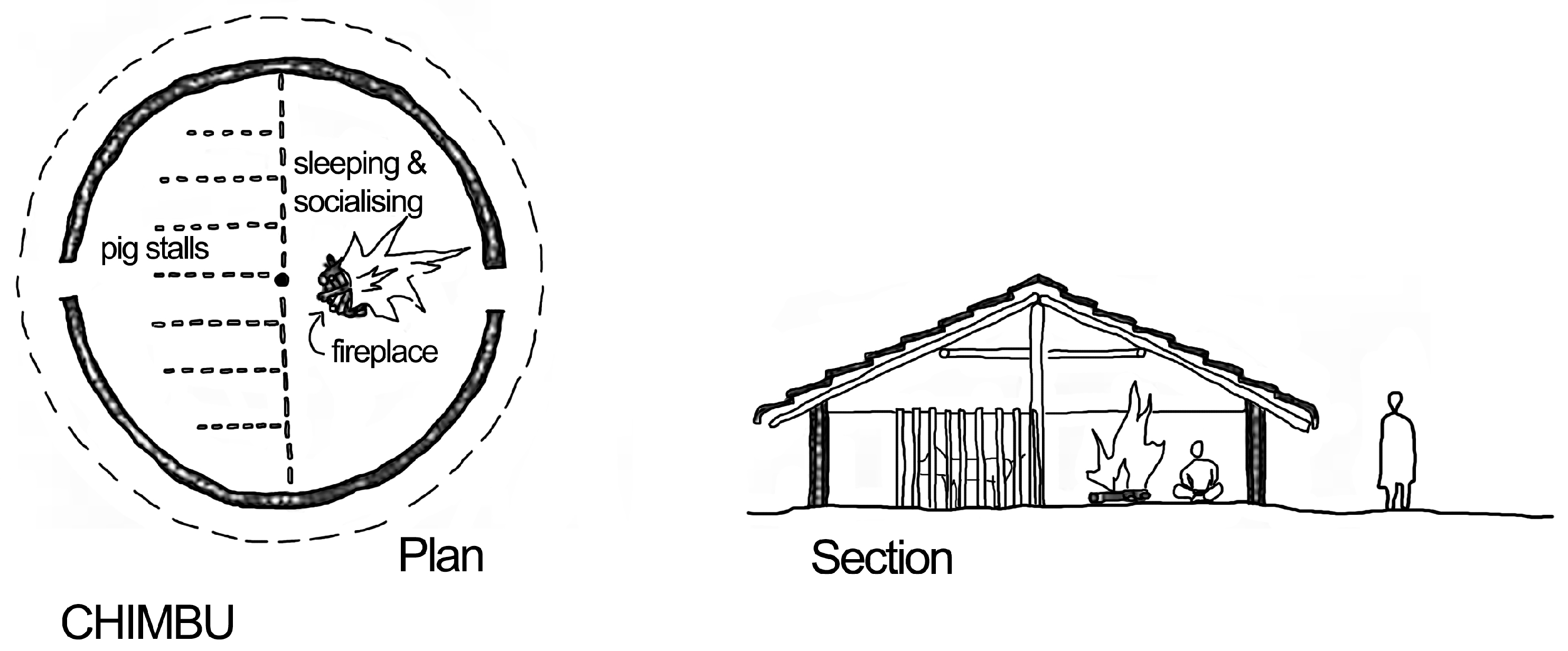
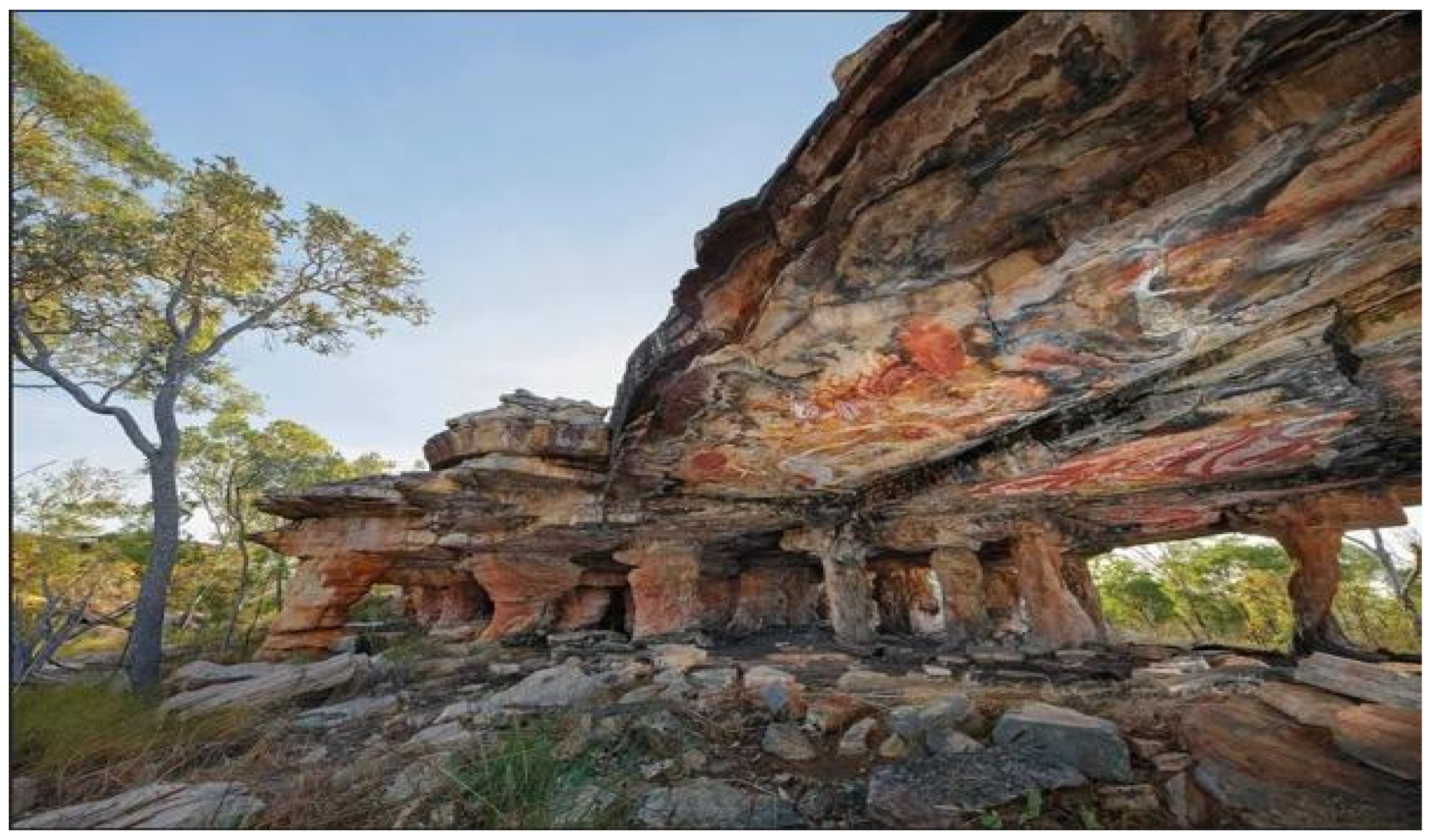

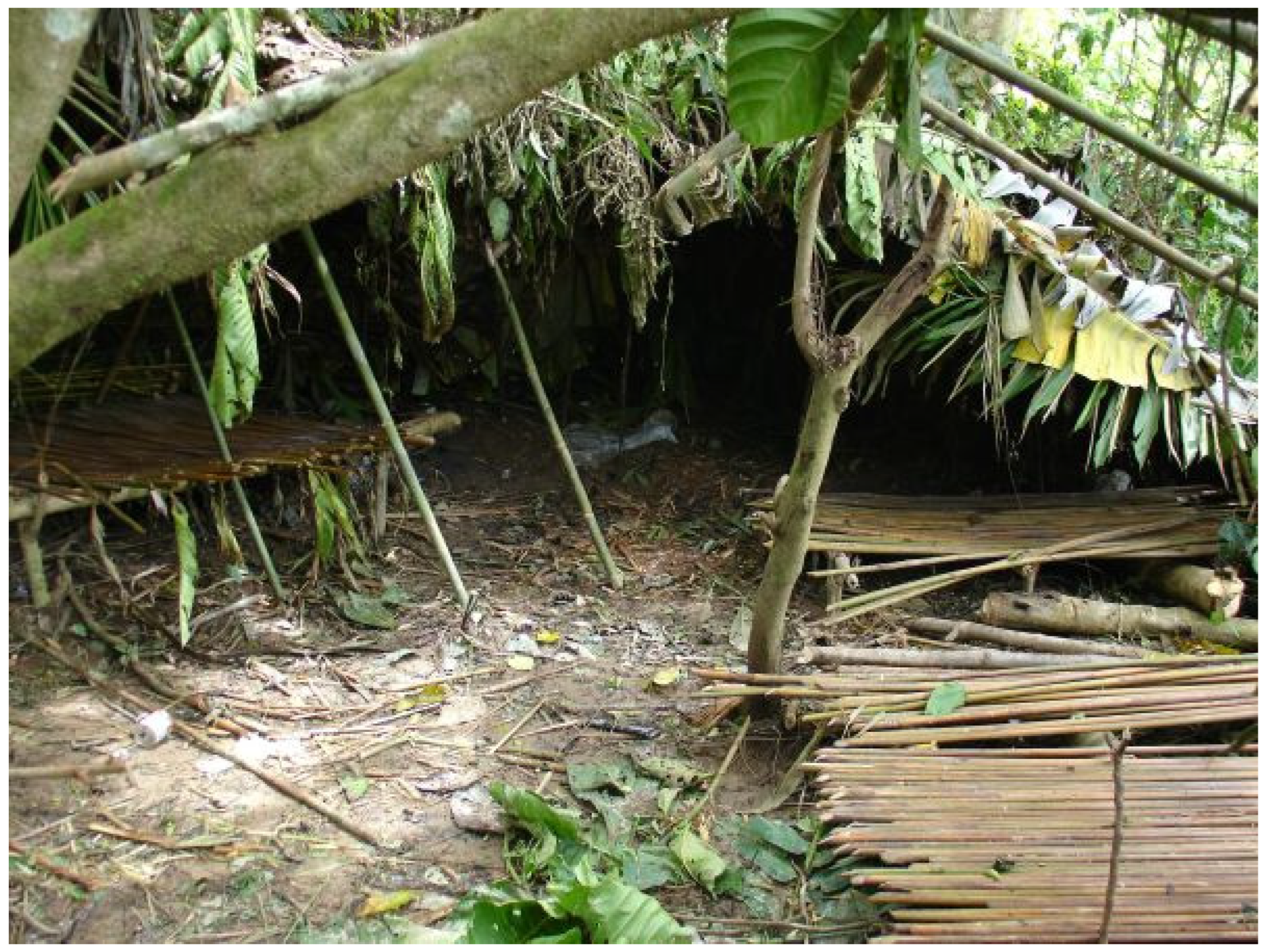



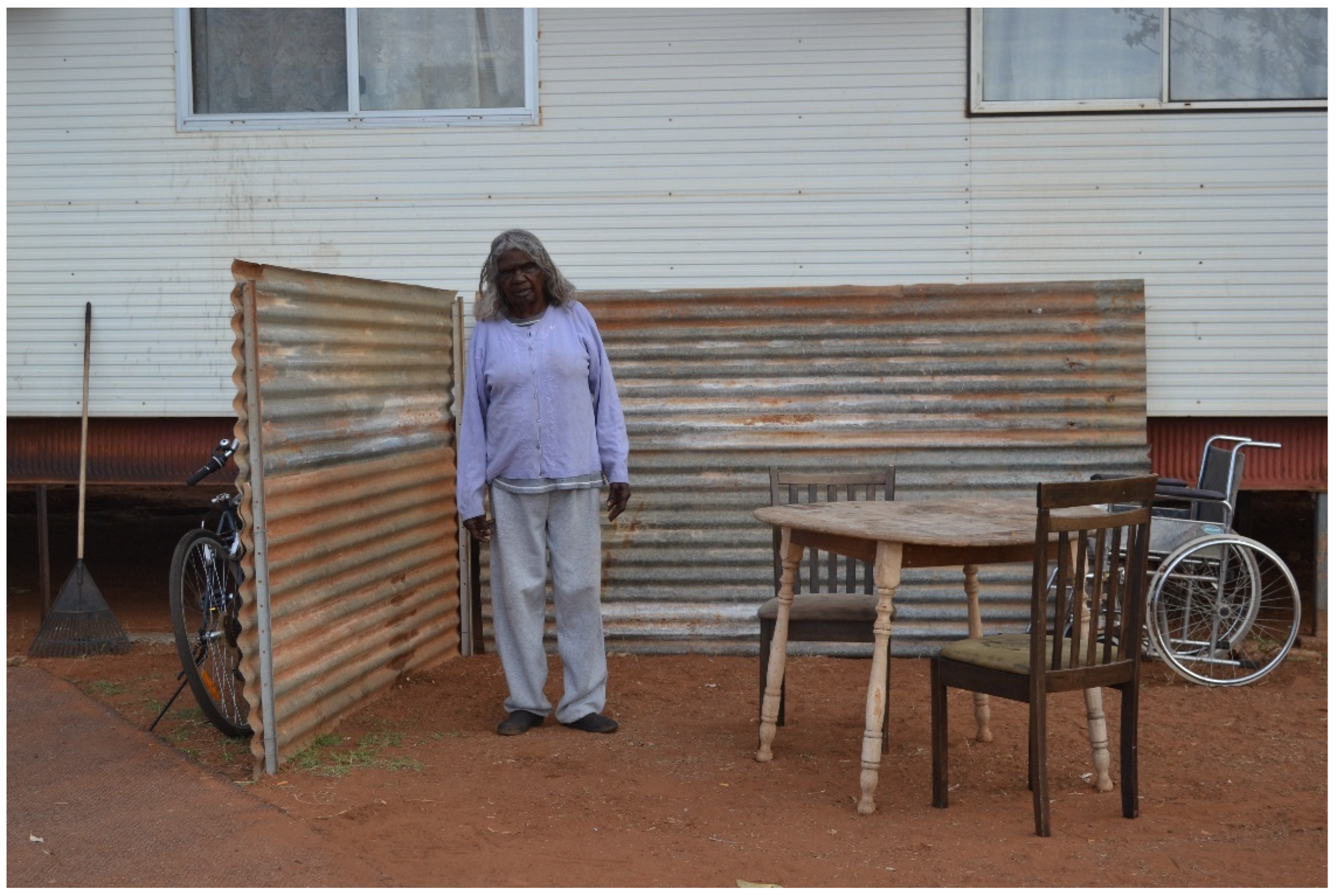
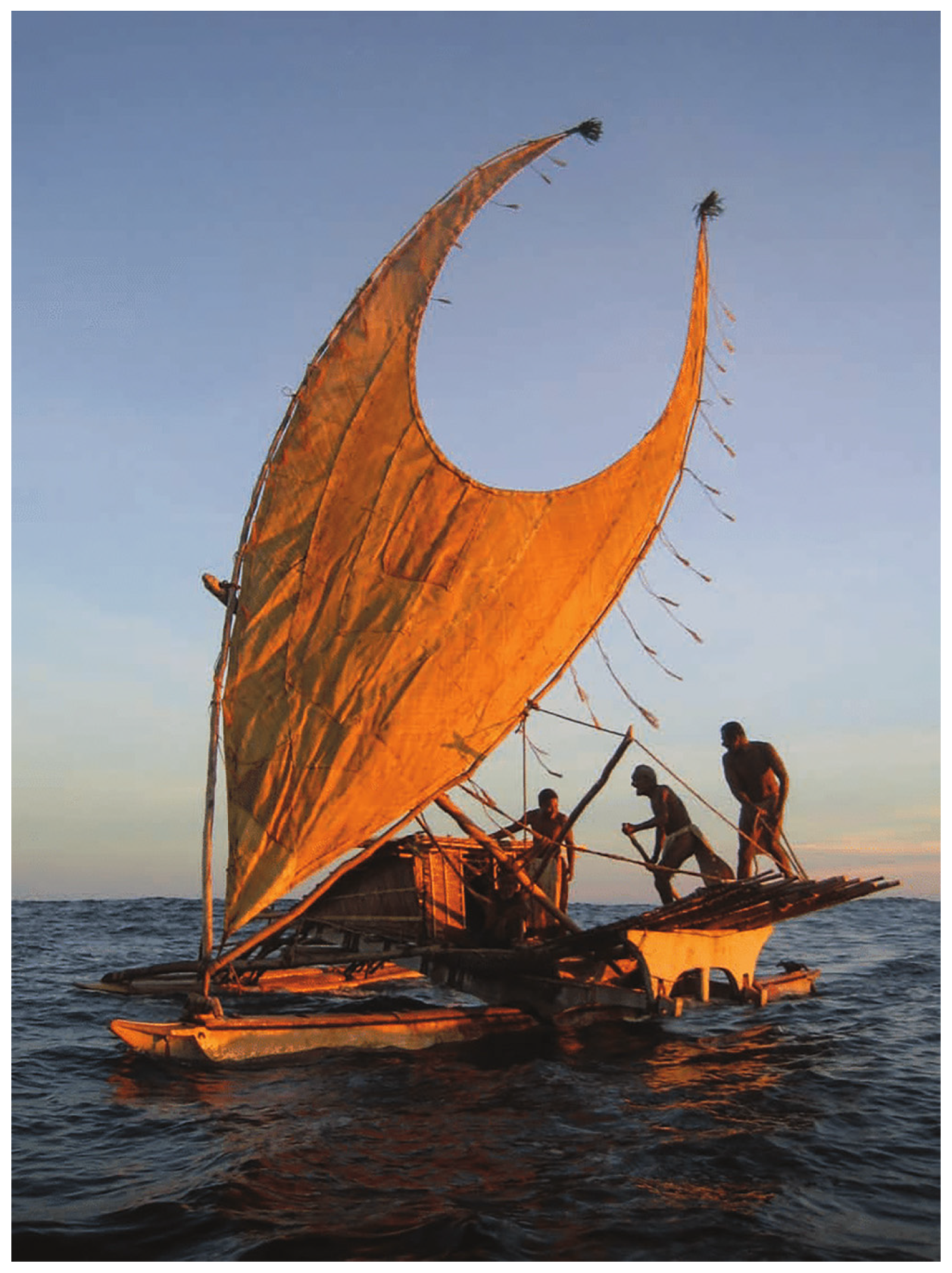

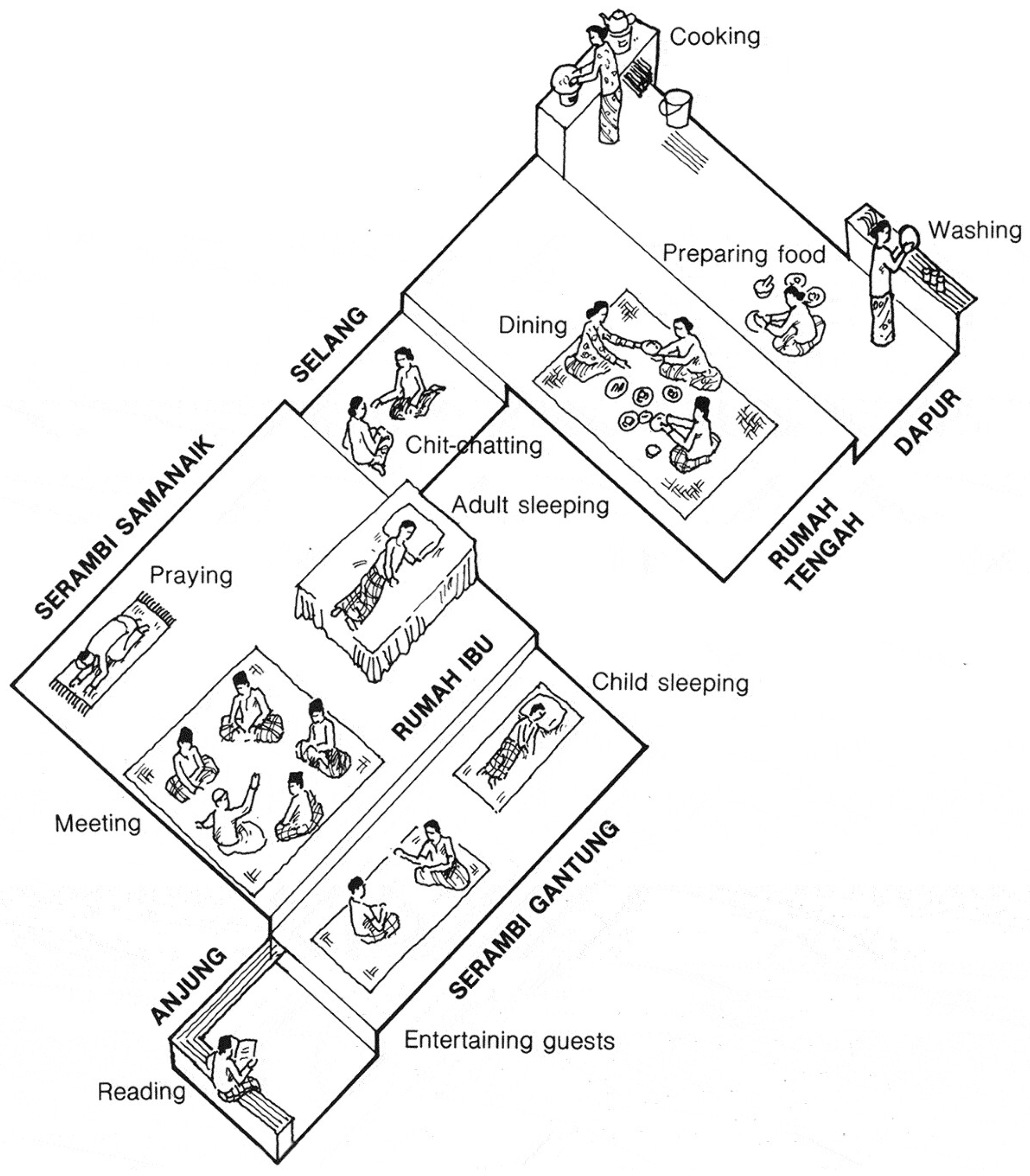


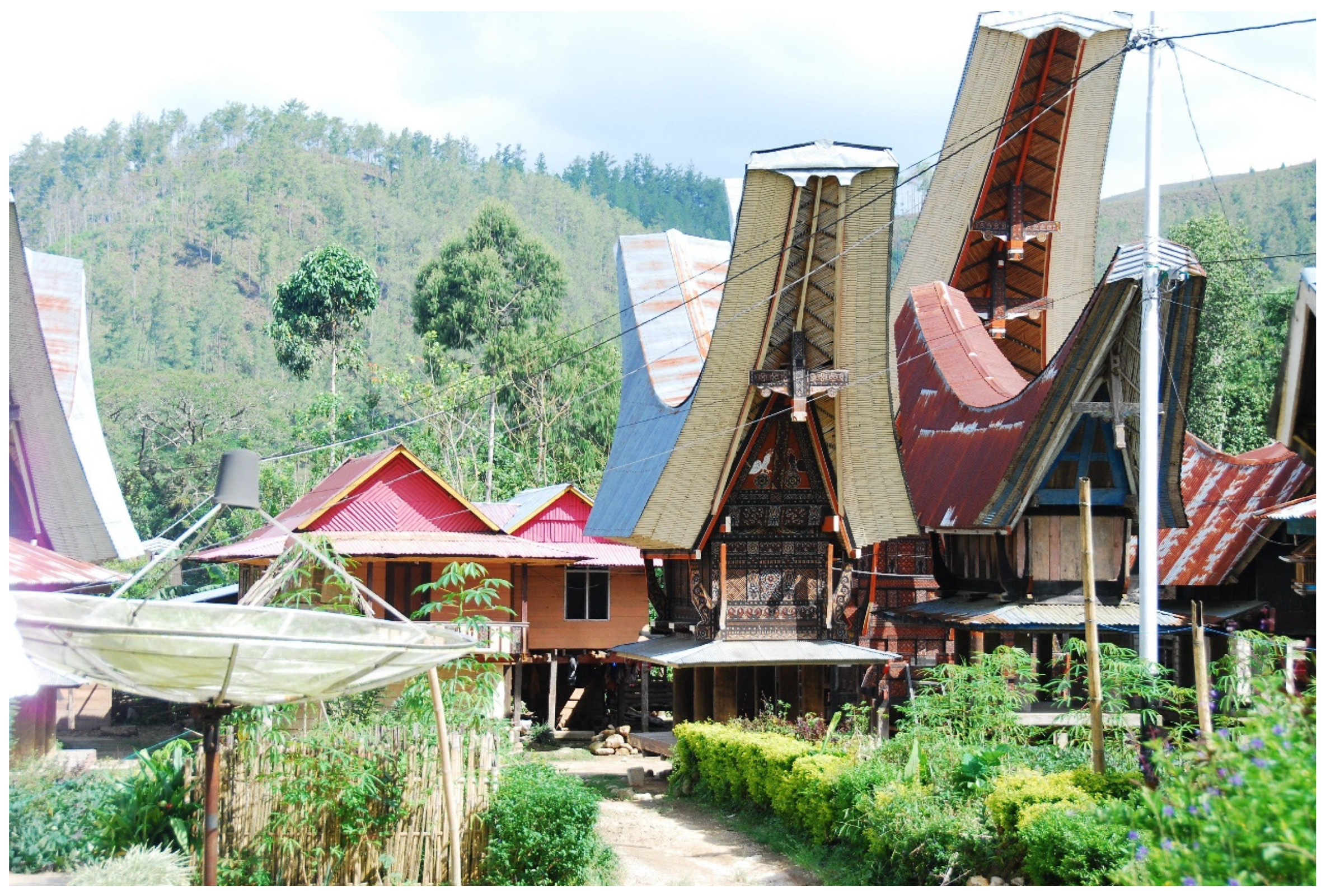
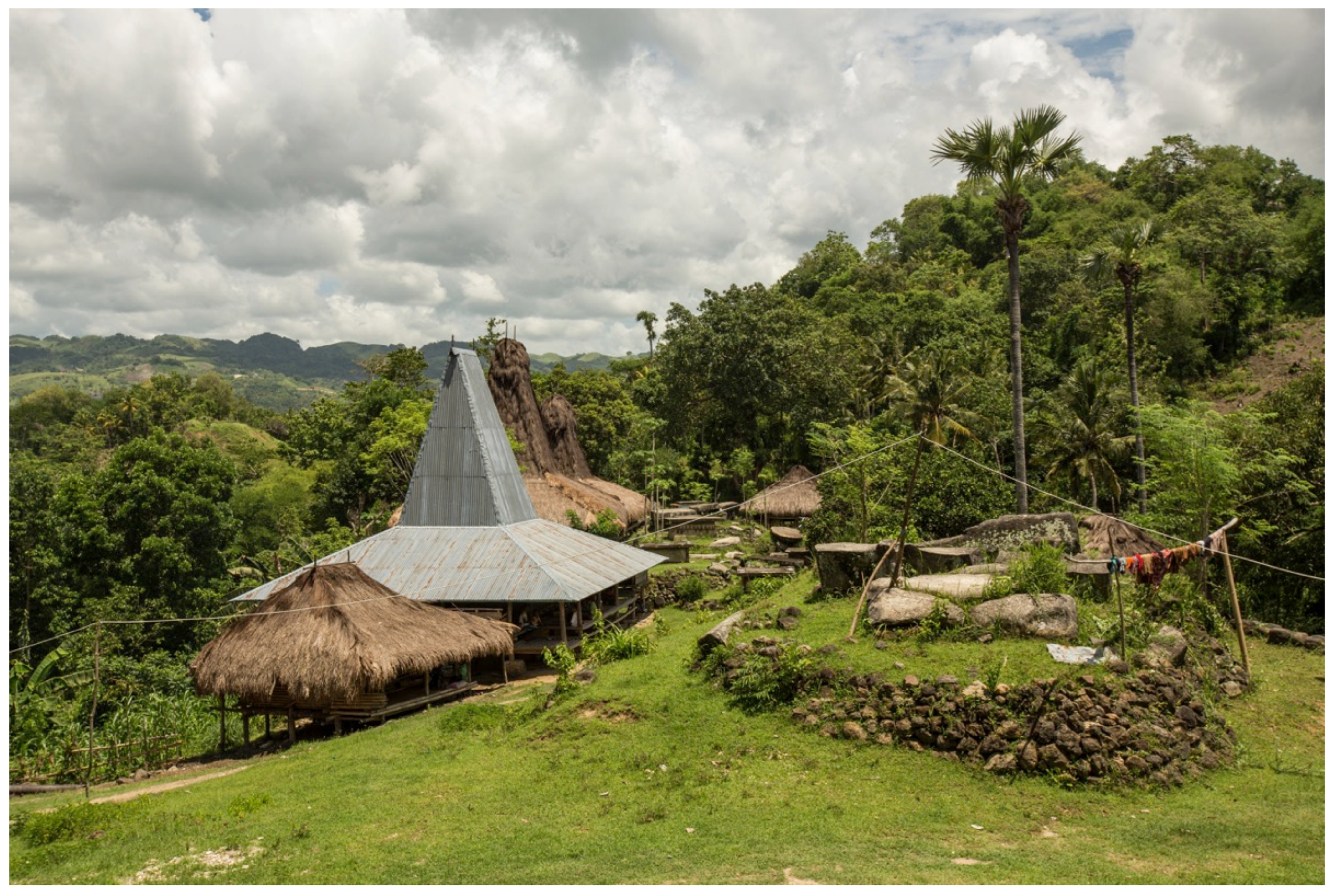
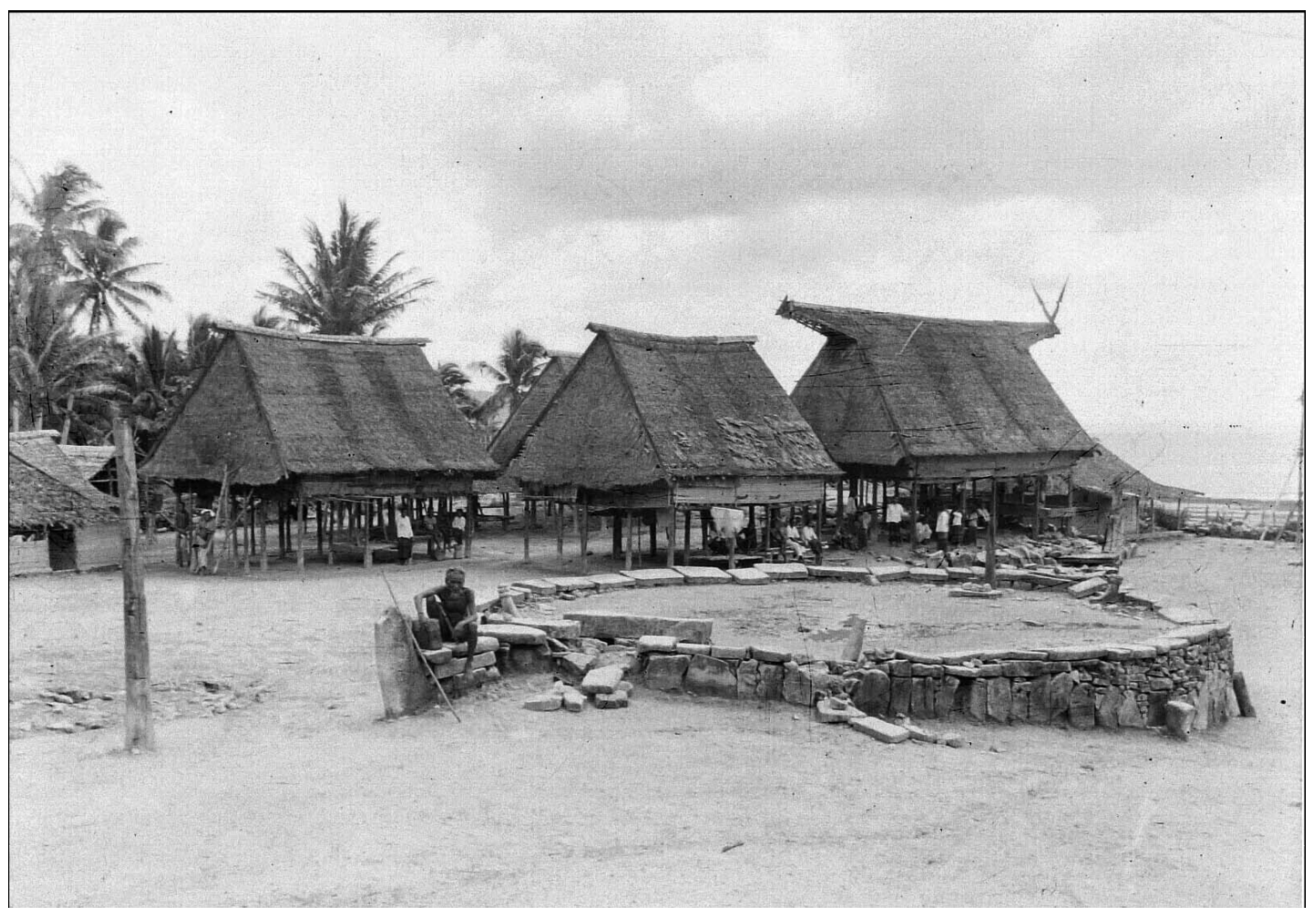
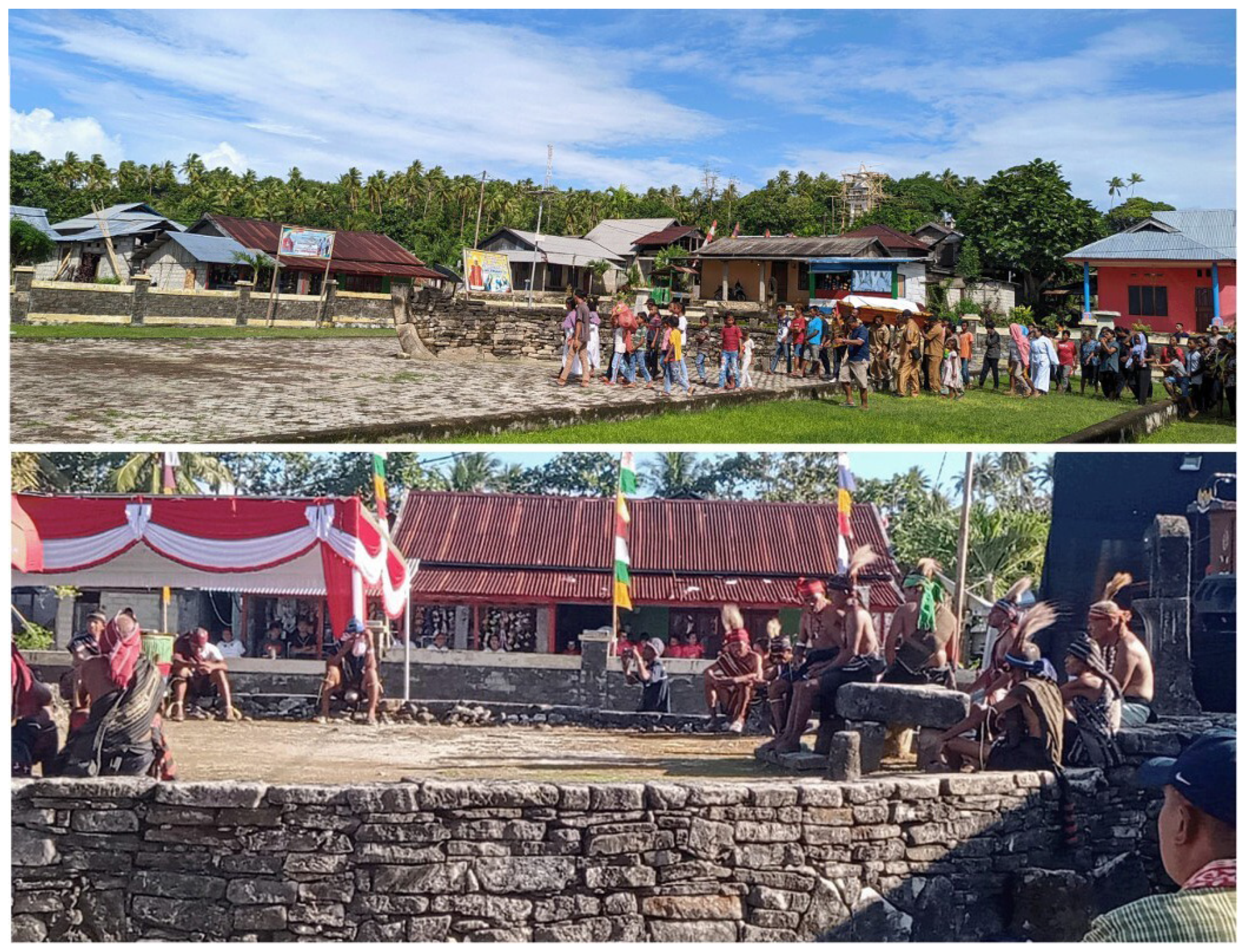

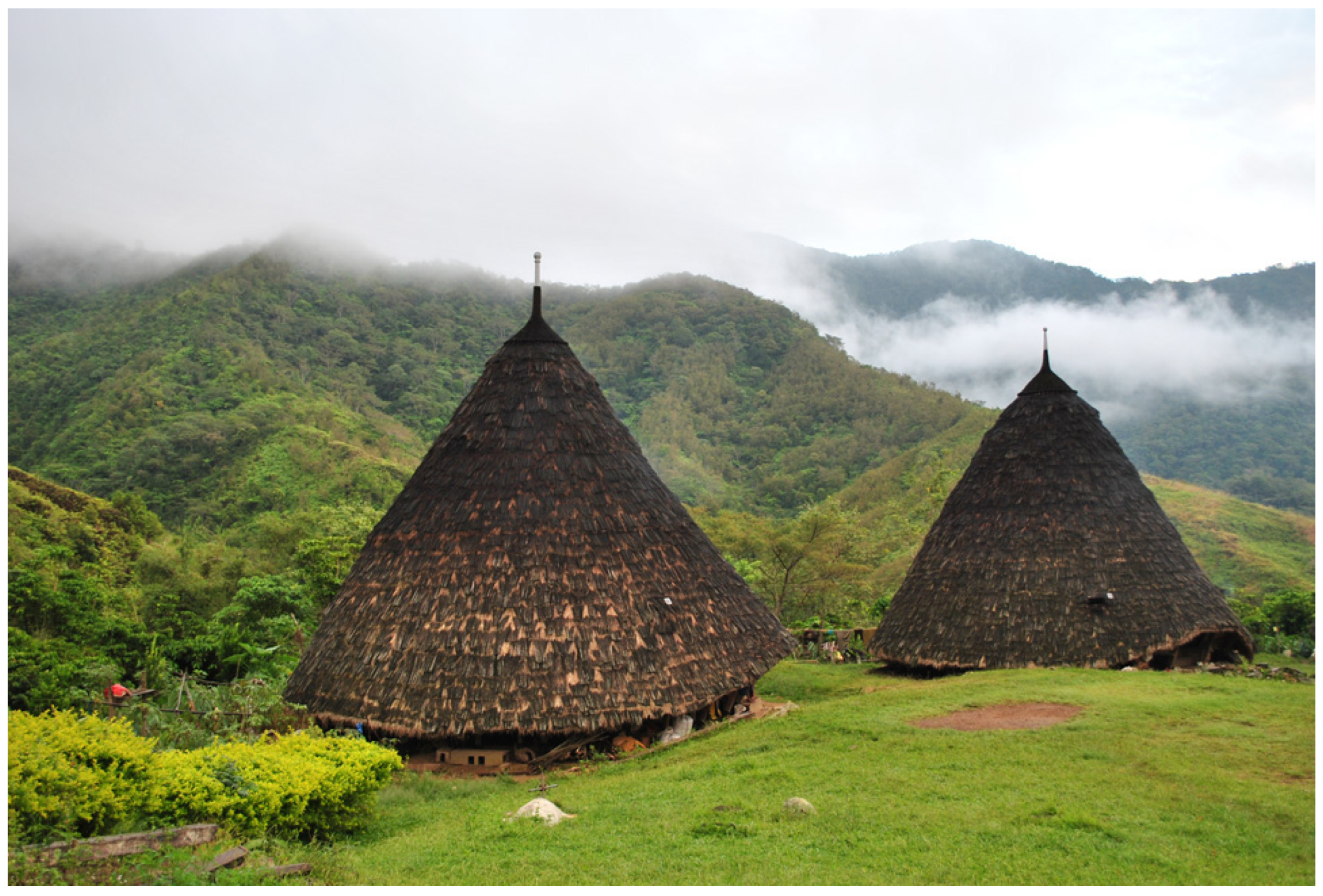
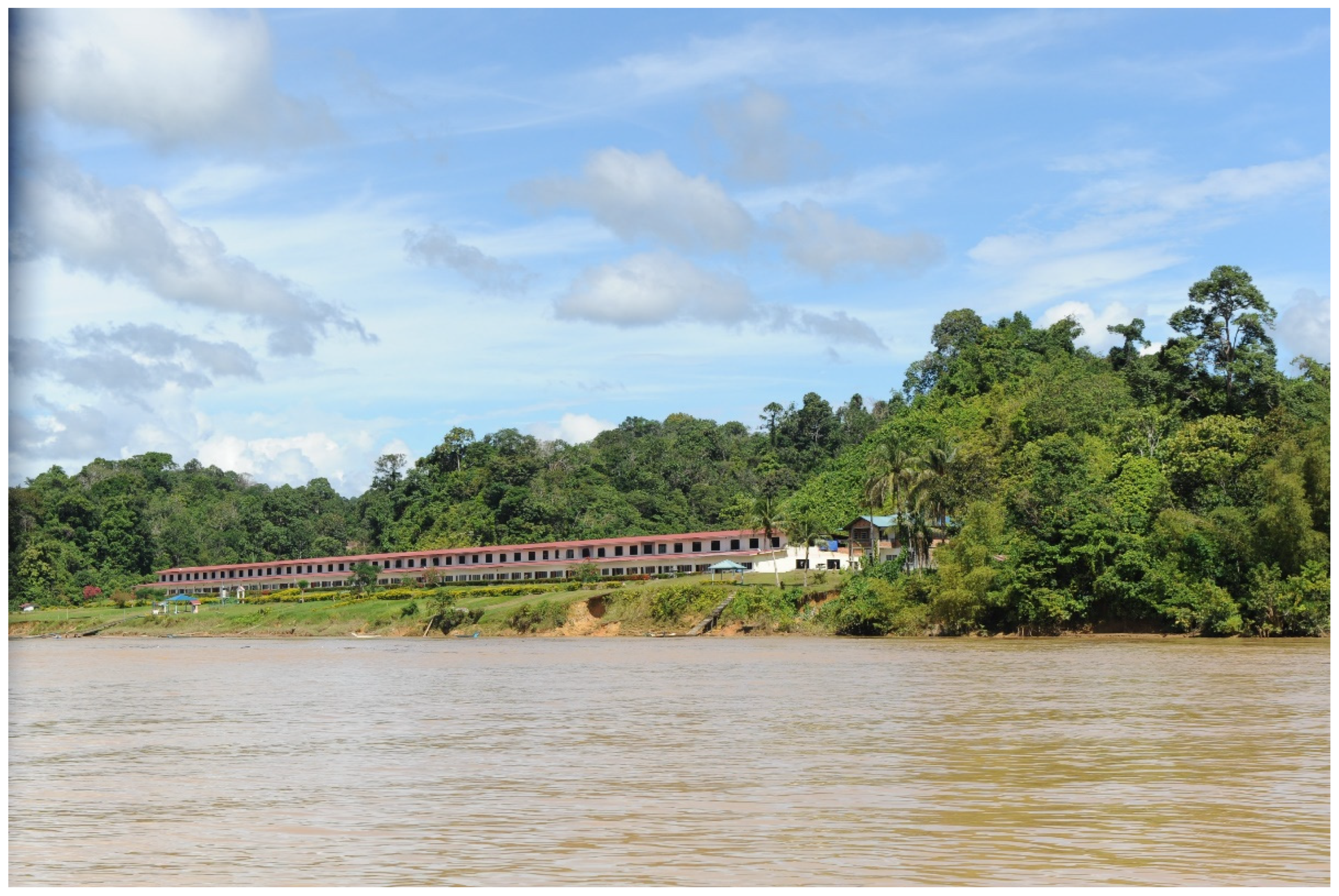
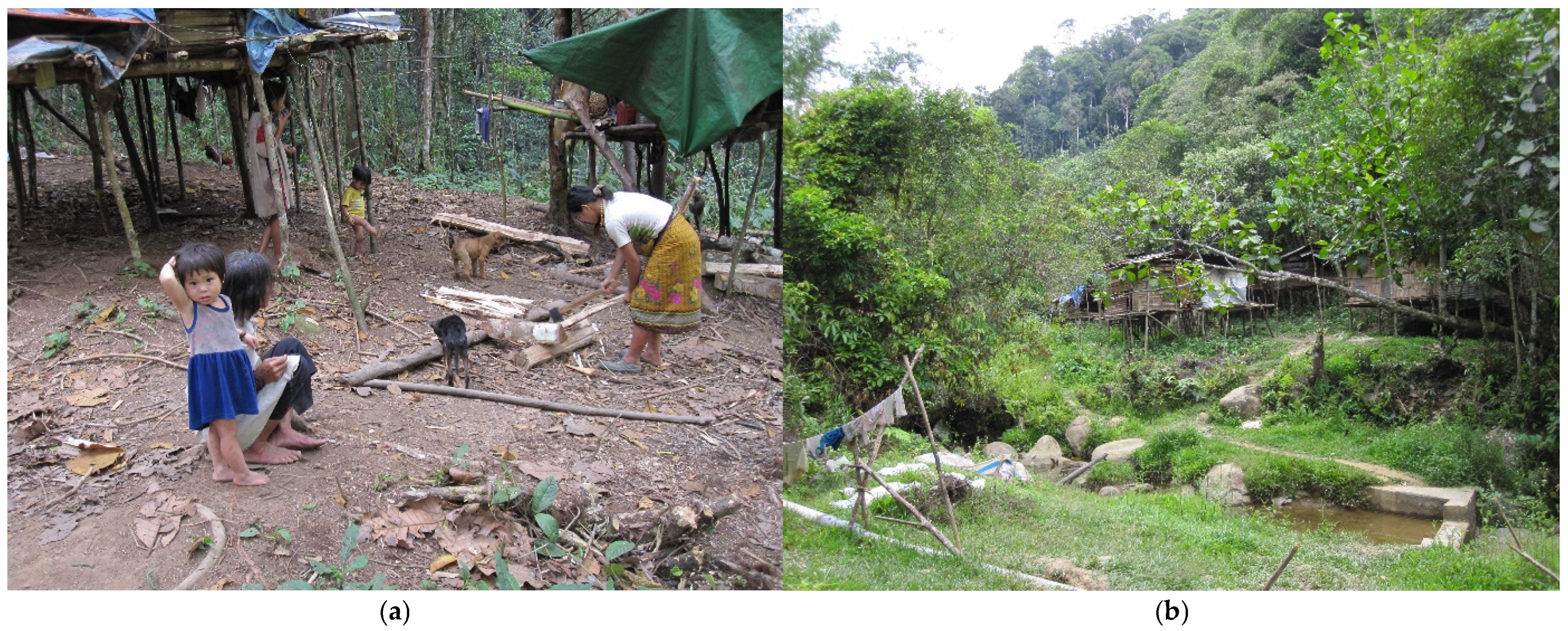
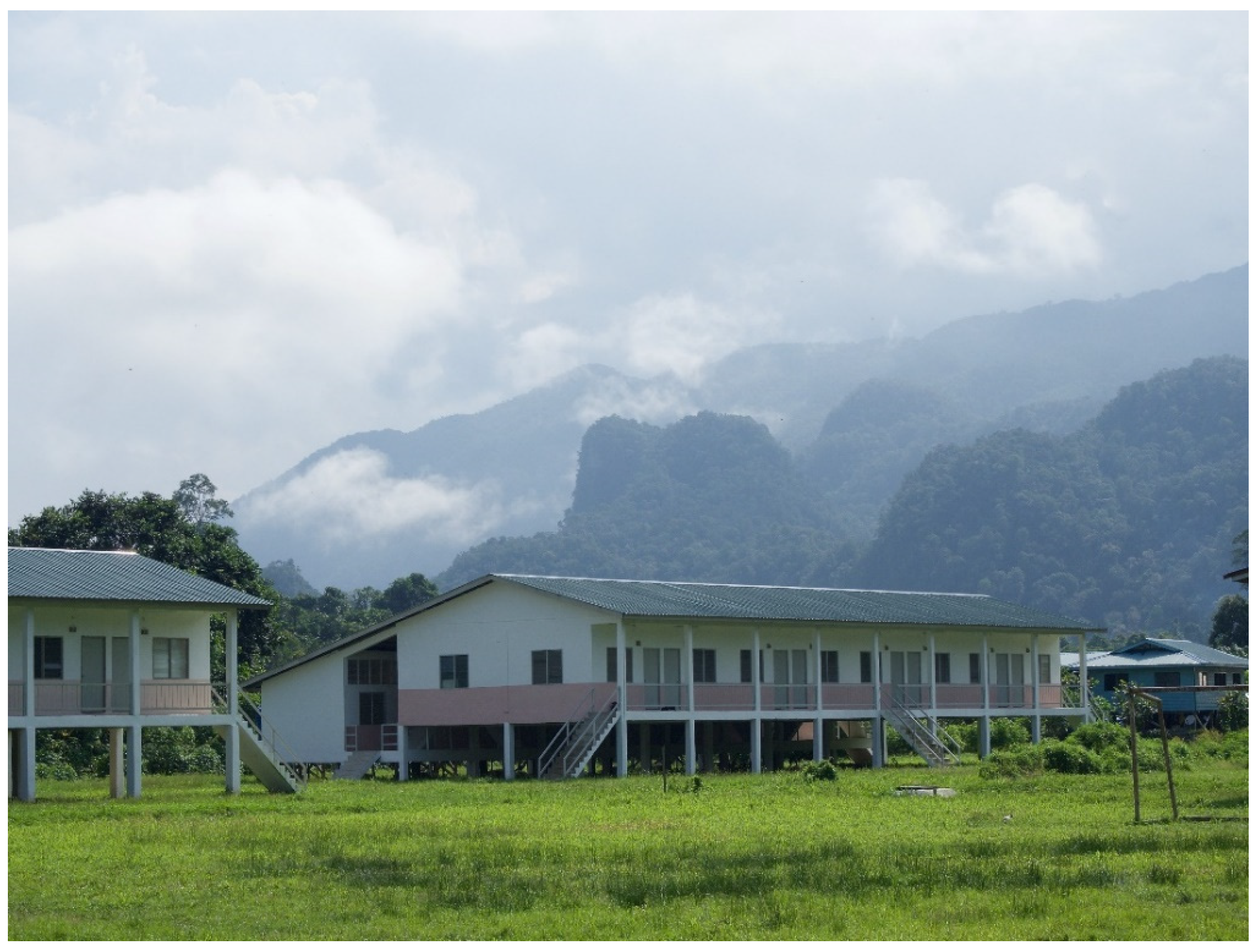
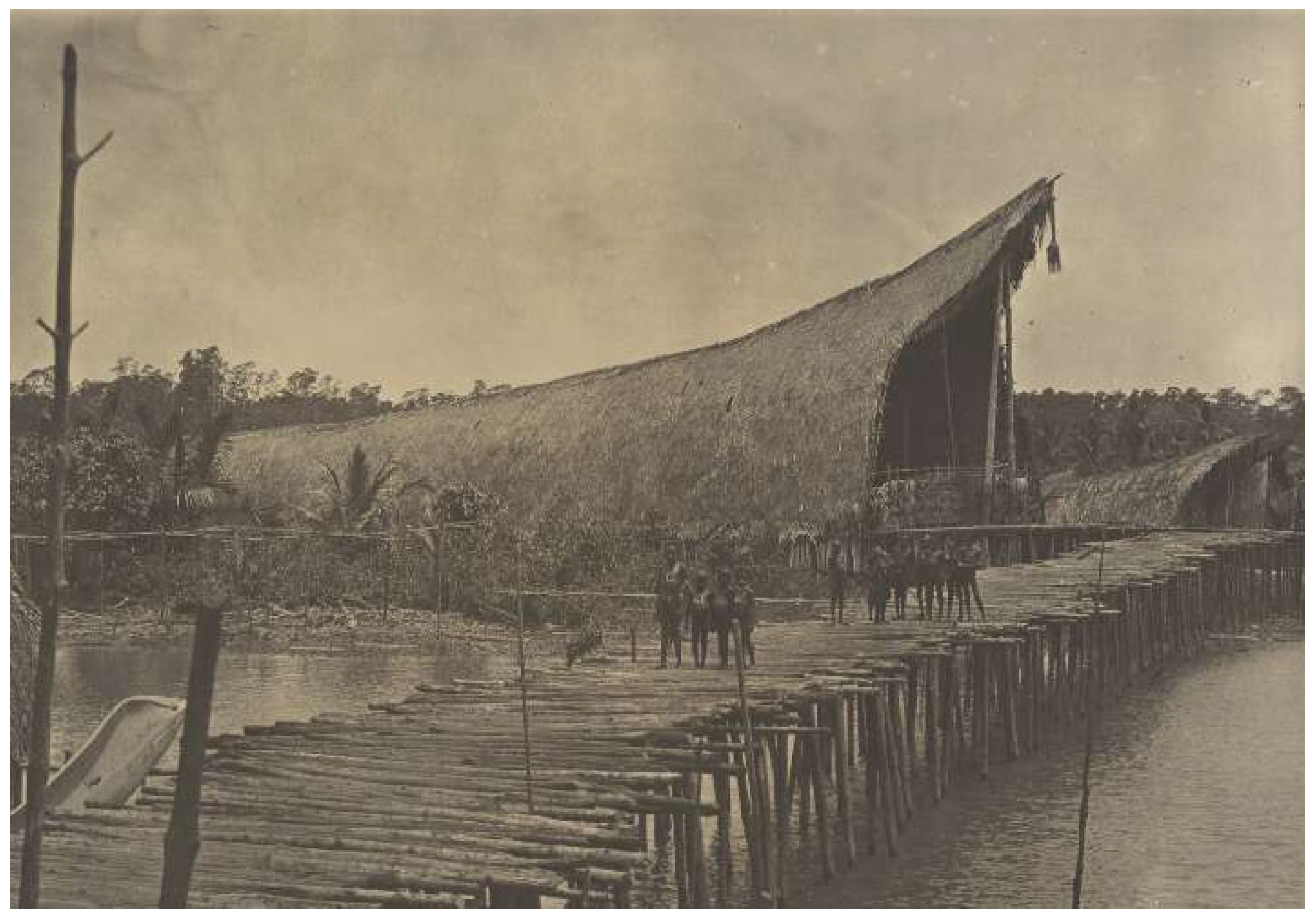


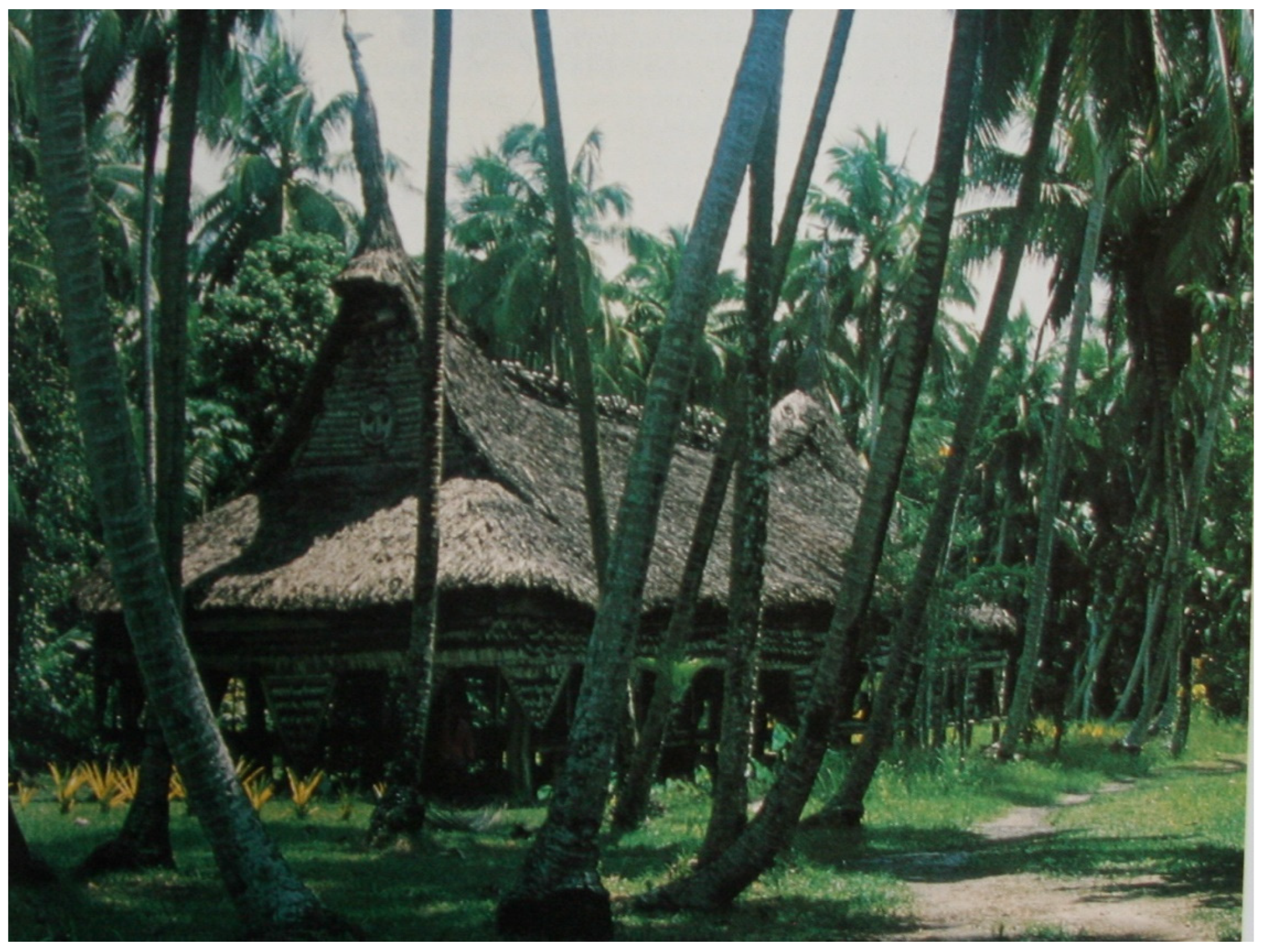

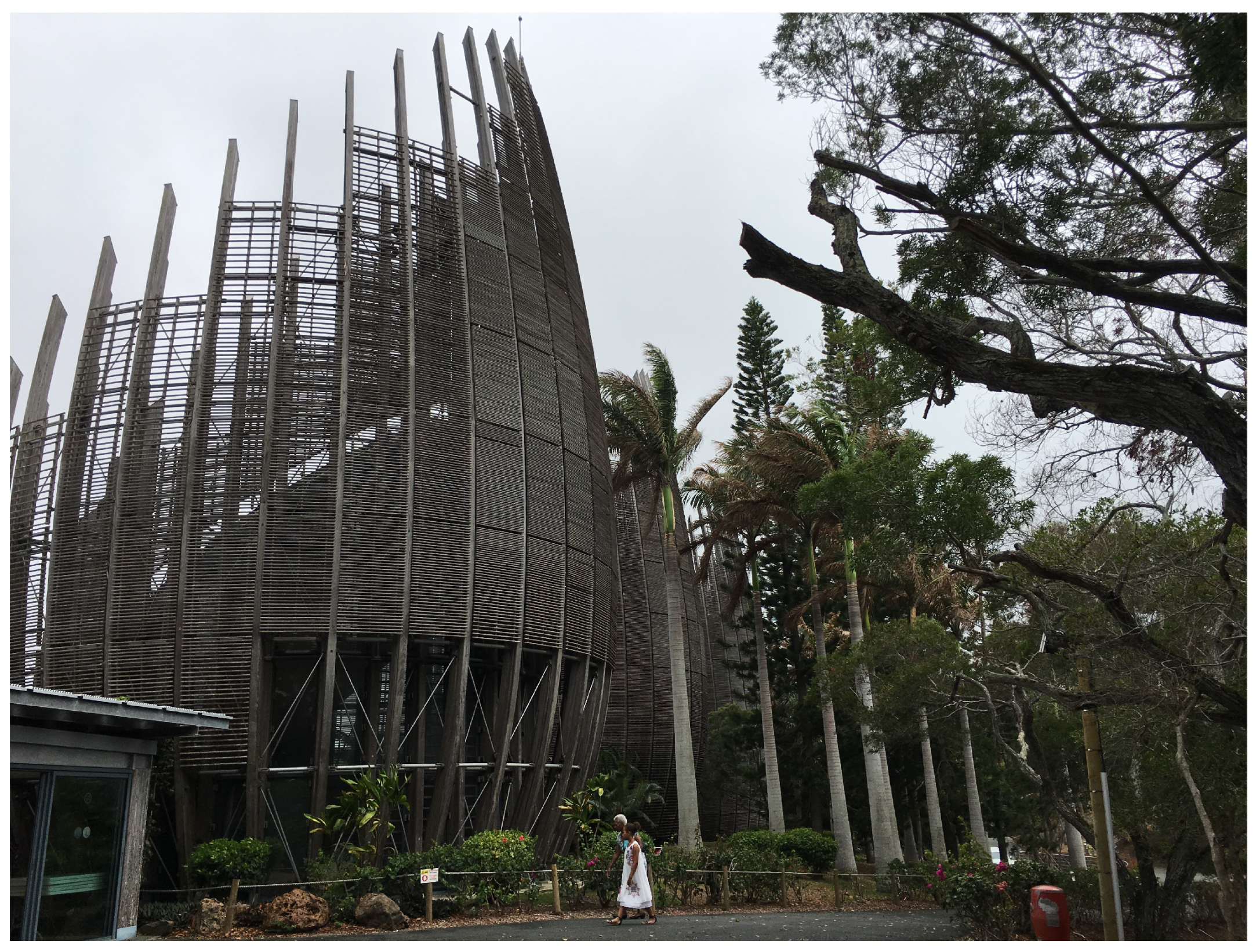

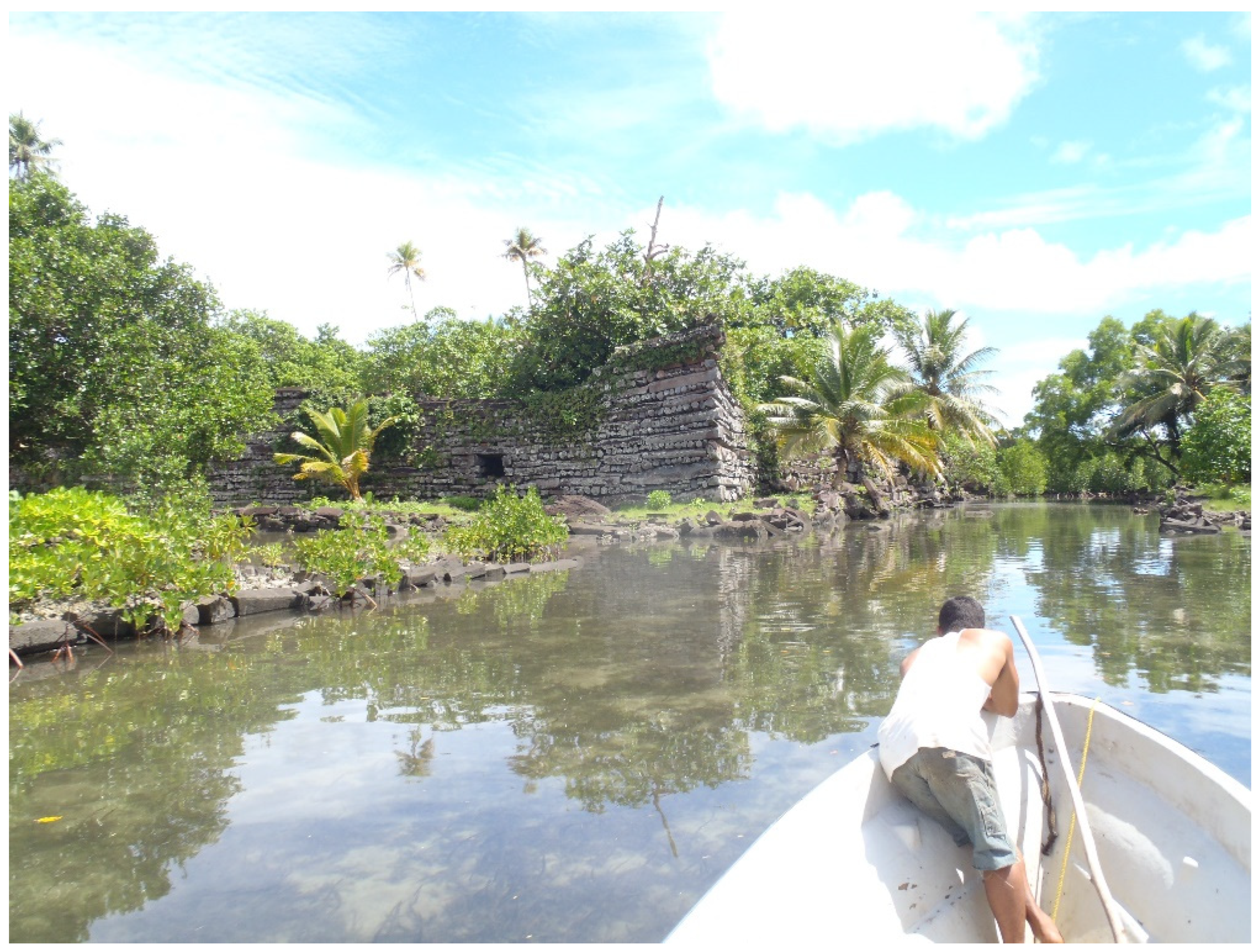

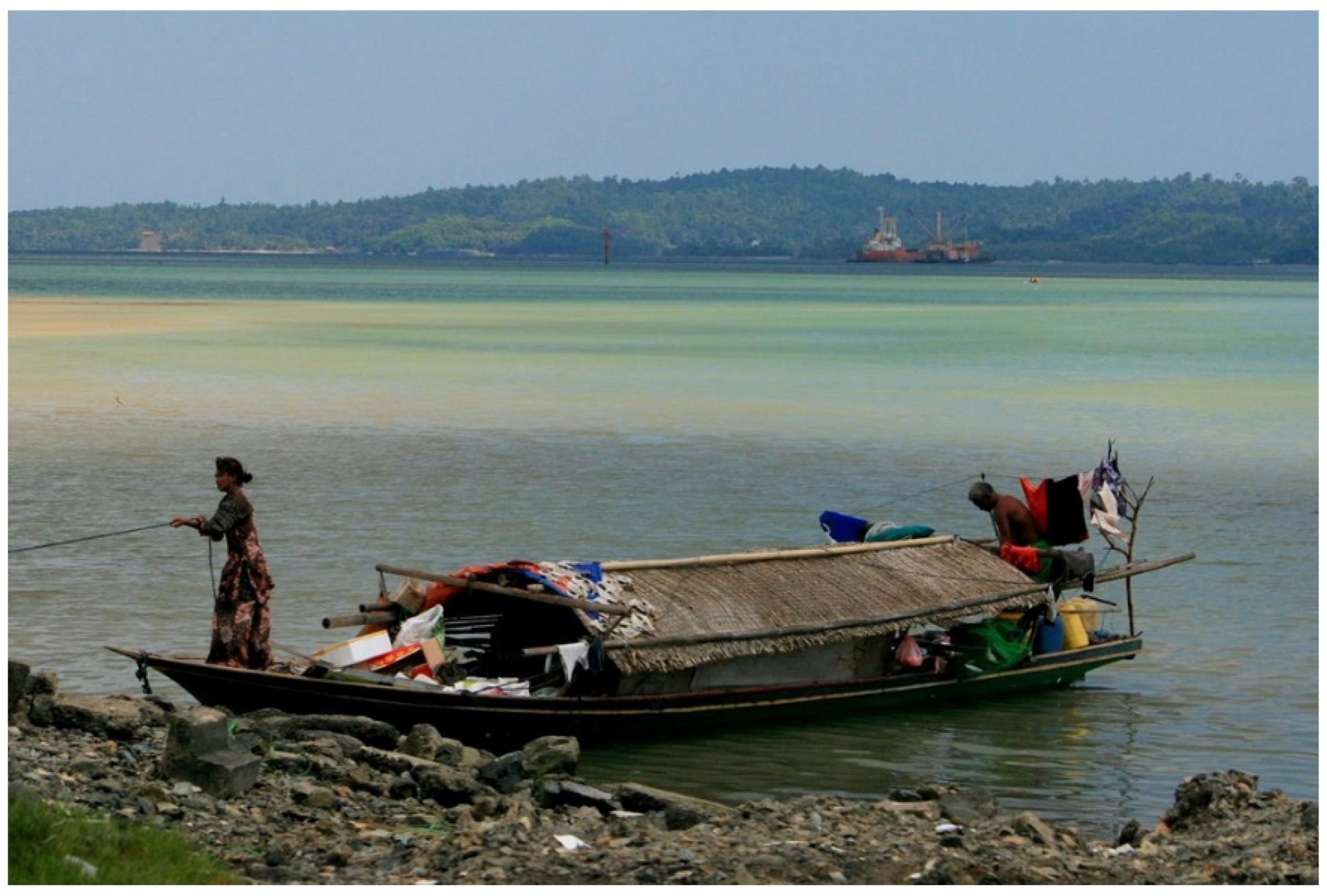

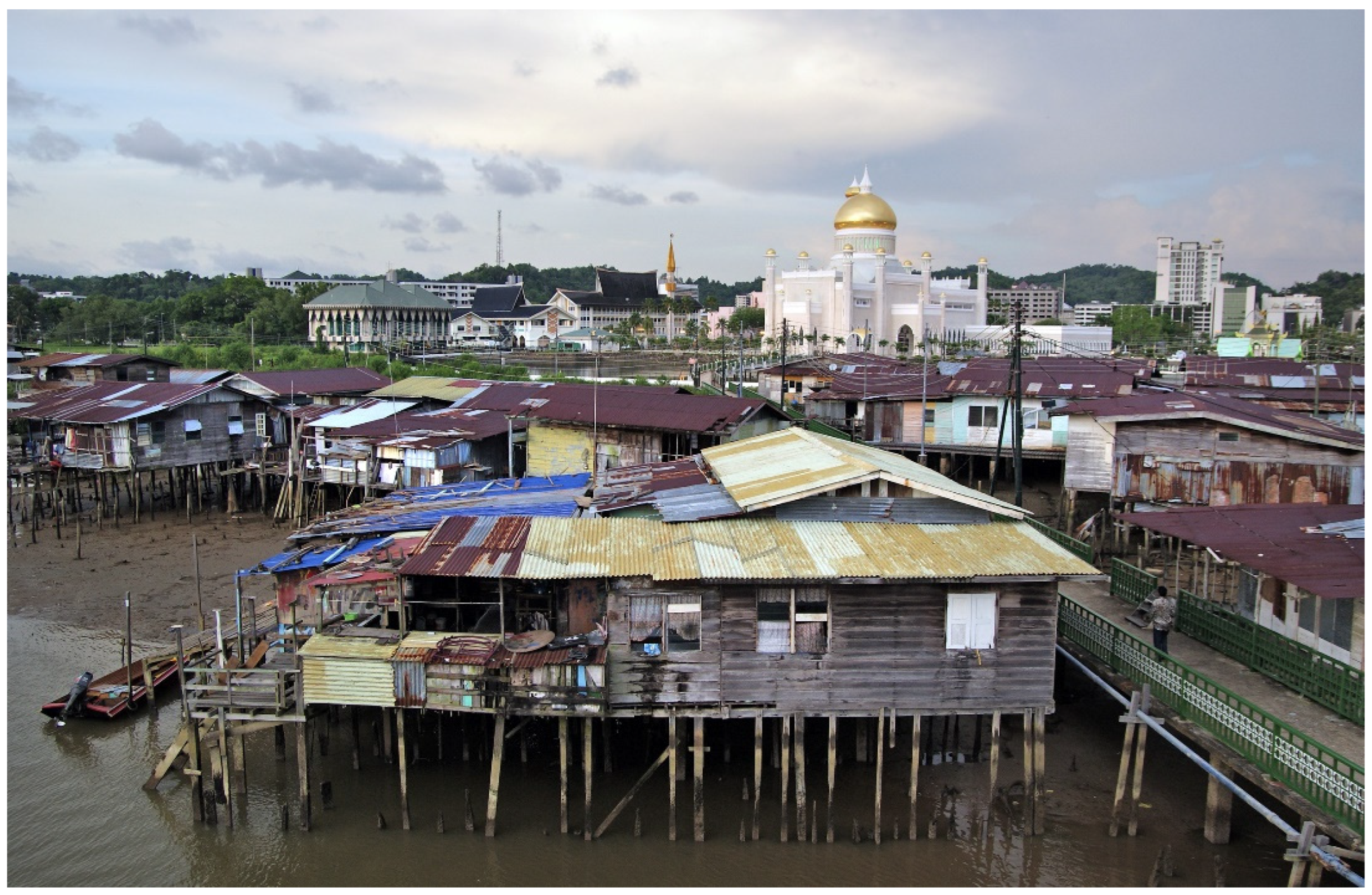

Disclaimer/Publisher’s Note: The statements, opinions and data contained in all publications are solely those of the individual author(s) and contributor(s) and not of MDPI and/or the editor(s). MDPI and/or the editor(s) disclaim responsibility for any injury to people or property resulting from any ideas, methods, instructions or products referred to in the content. |
© 2025 by the author. Licensee MDPI, Basel, Switzerland. This article is an open access article distributed under the terms and conditions of the Creative Commons Attribution (CC BY) license (https://creativecommons.org/licenses/by/4.0/).
Share and Cite
Memmott, P. Exploring the Continuity of Settlement Tradition Through Australasia and Oceania over 65,000 Years. Buildings 2025, 15, 4165. https://doi.org/10.3390/buildings15224165
Memmott P. Exploring the Continuity of Settlement Tradition Through Australasia and Oceania over 65,000 Years. Buildings. 2025; 15(22):4165. https://doi.org/10.3390/buildings15224165
Chicago/Turabian StyleMemmott, Paul. 2025. "Exploring the Continuity of Settlement Tradition Through Australasia and Oceania over 65,000 Years" Buildings 15, no. 22: 4165. https://doi.org/10.3390/buildings15224165
APA StyleMemmott, P. (2025). Exploring the Continuity of Settlement Tradition Through Australasia and Oceania over 65,000 Years. Buildings, 15(22), 4165. https://doi.org/10.3390/buildings15224165





